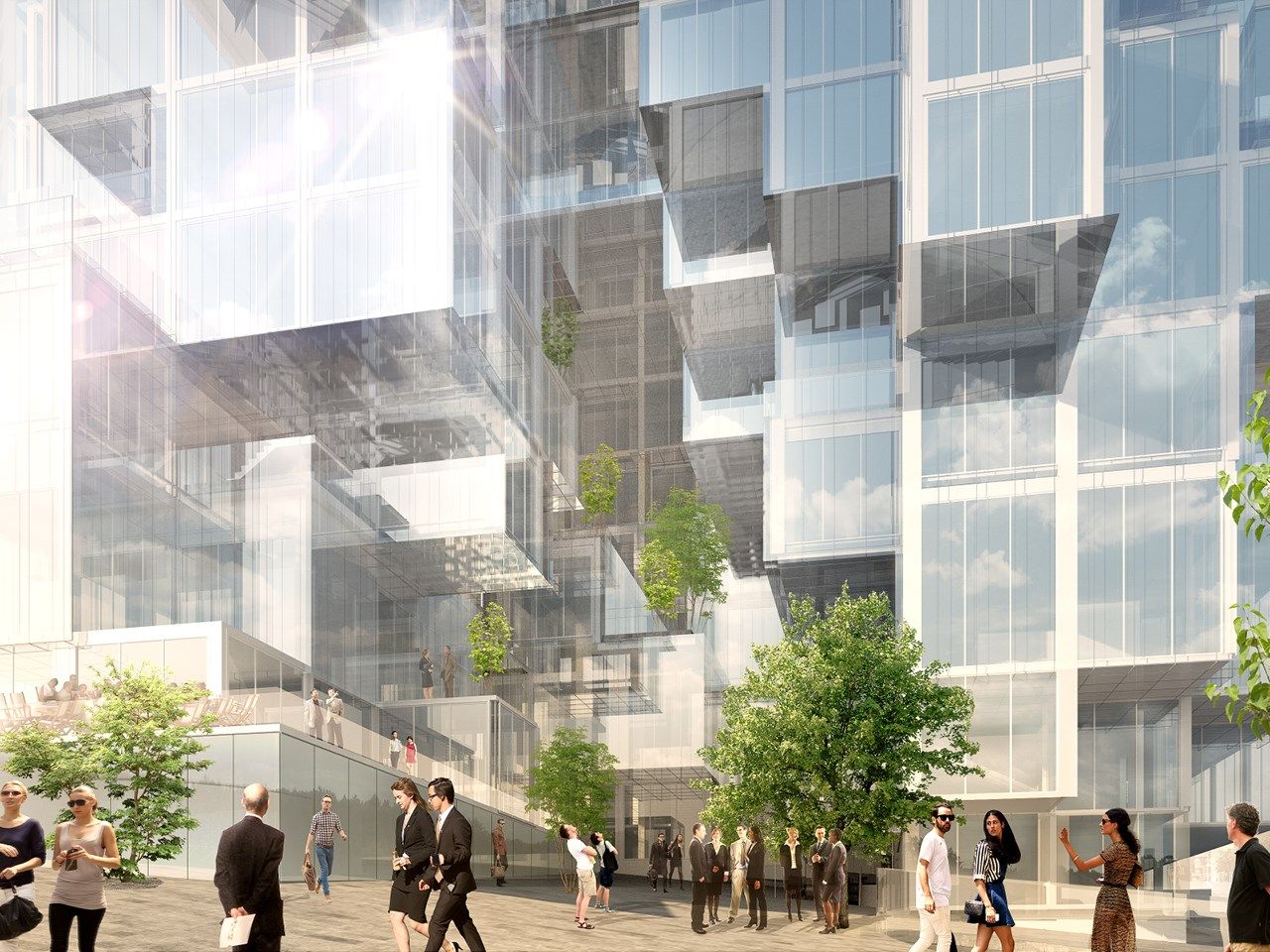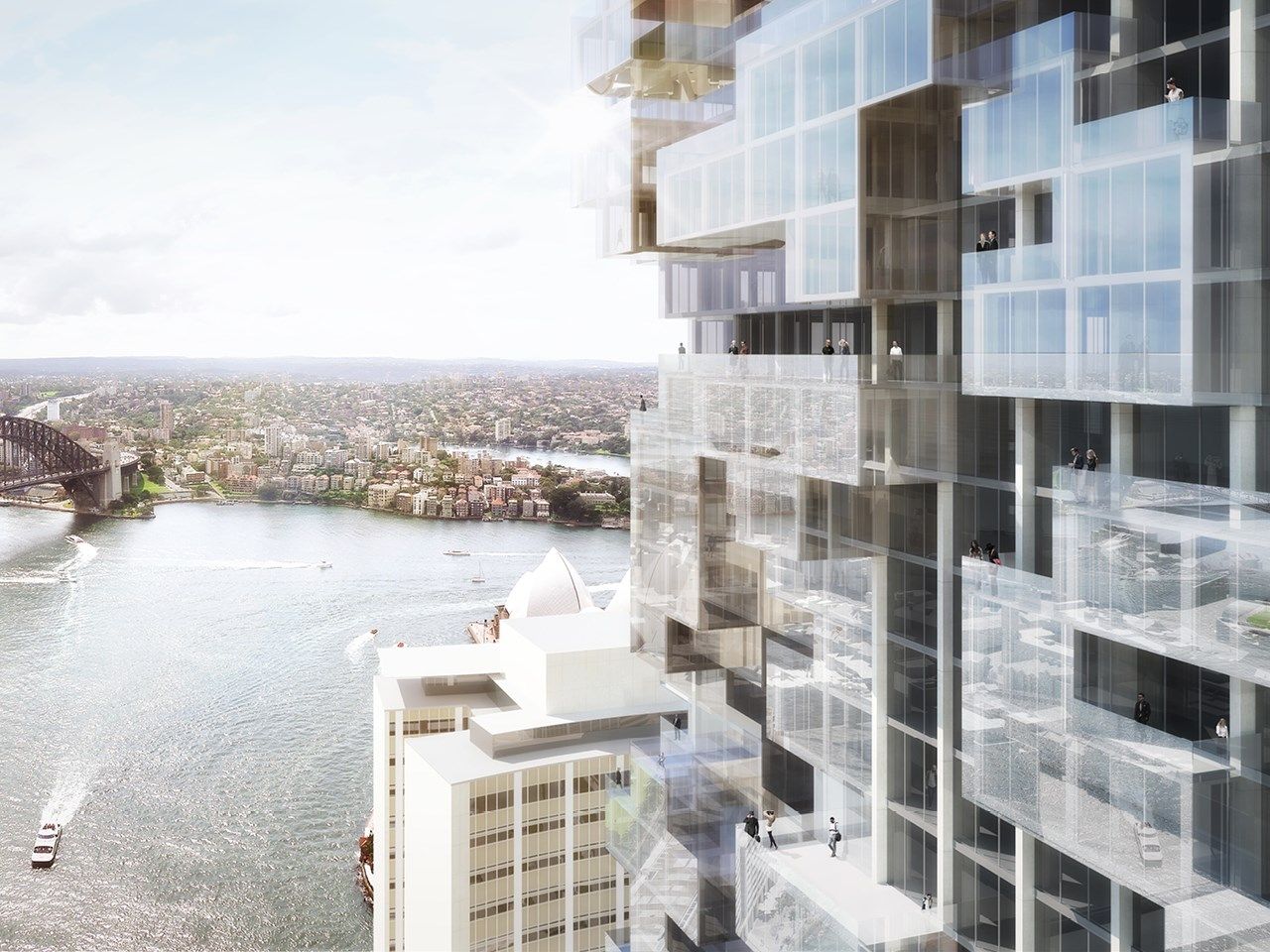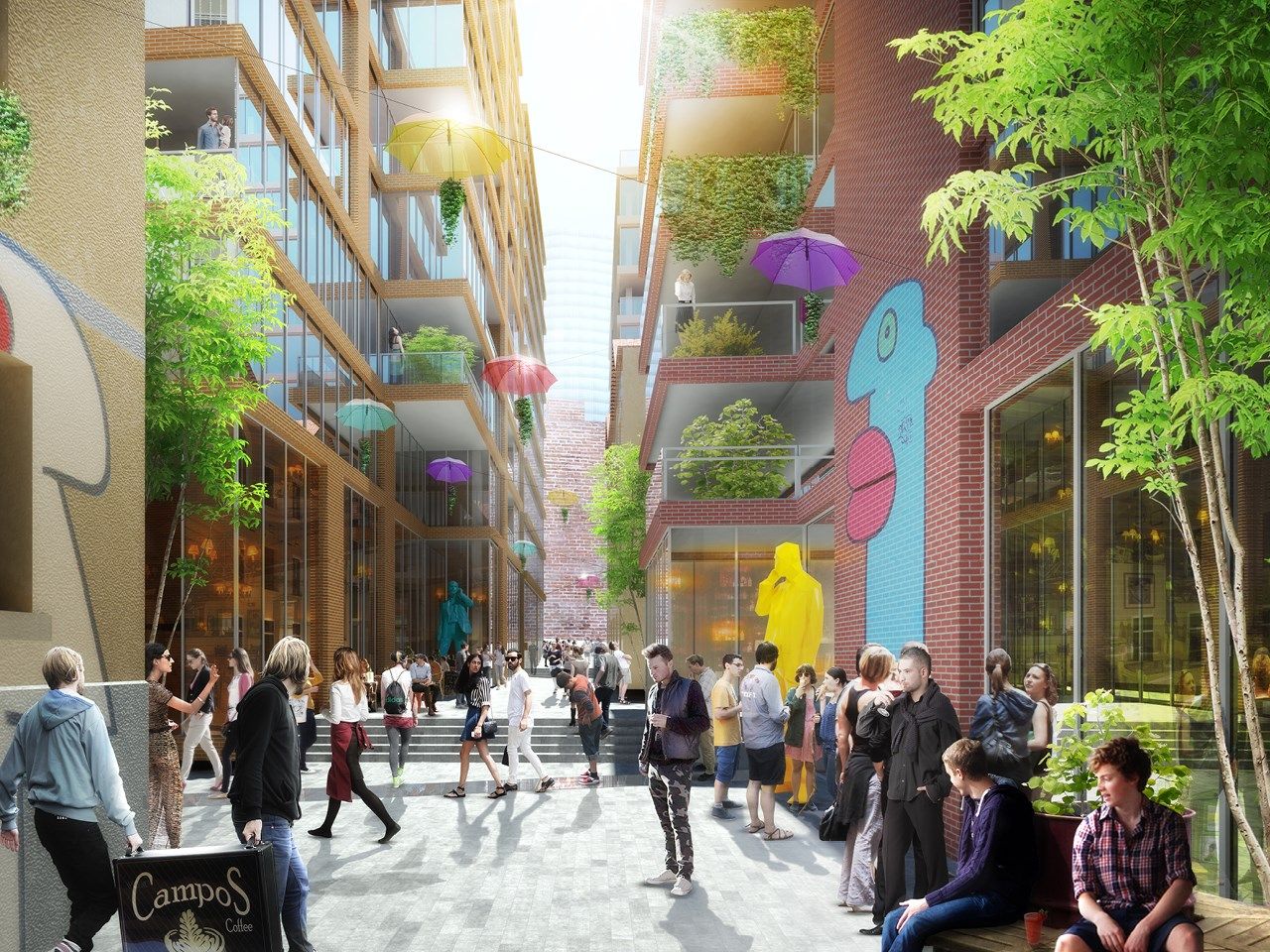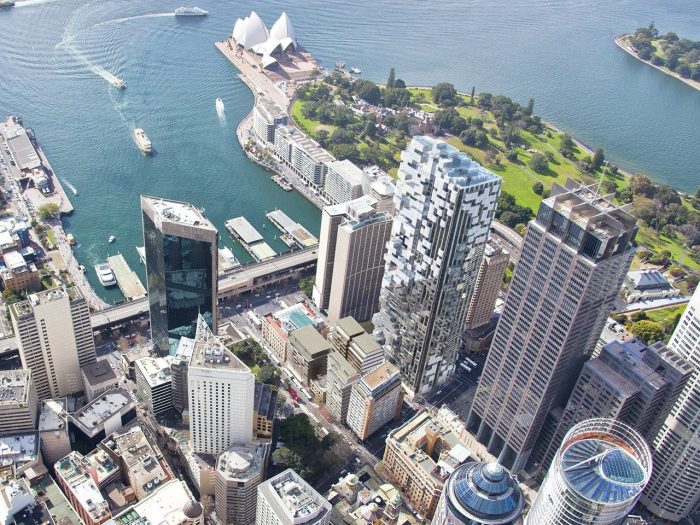The Coral Tower
The renewal of the AMP tower can be seen as part of a major effort to upgrade Sydney’s downtown area, an effort increases the area’s density and diversity with globally attractive architecture. In addition to this ambition, the renovated tower aims to create a refreshed address for AMP in Australia’s largest city. MVRDV’s tower responds to its context on a human scale, shifting to create views and light both for the tower and public spaces at its base.
The existing tower’s structure is retained, increasing the speed of construction significantly, while a new façade gives the tower a new lease on life. Where many of the older towers in the area can be described as introvert and enclosed, maybe we can add a more open, social variant to the typology. A careful discussion with the city and the client and the surrounding has led to a possible envelope in which the transformation could take place. MVRDV adapted this starting point step by step to create a tower which response to its context on a human scale, shifting to create views and light both for the tower and public spaces at its base.
The existing structural grid is used as the basis for the extension and renovation of the tower’s floor plates and facades, optimizing the entire operation and speeding up construction. The existing grid provides a ‘pixel-like’ working environment. This smaller scale of the pixel allows for the possibility of individualized floor plans which react to the building’s context and create unique spaces on a human scale.
By adding and removing pixels around the building perimeter, the length of the façade is enlarged which allows more people to have beautiful views and brings daylight deeper into the large floorplates. By “carving out” parts of these big floors, even more, facade length per floor can be created; more corner rooms can be made; more daylight can come into the heart; more views towards the surrounding can be made.
These pixels allow for panoramic areas like enormous bay windows, both in everyday workspaces as well as breakout areas and lobbies. Suddenly, the significant views of the city to the East or North are available throughout the tower. The pixel’s positioning can allow for collective internal spaces like a reception desk with a panoramic view, or a kitchenette with an external terrace, or a board room which overlooks the building’s atrium.
The carving can also create collective external spaces that emphasize the urban environment. At the AMP plaza, a grand entrance space can be created where a majestic cave has been sculpted out. Here the different pixels house collective amenities, shops, coffee places, meeting rooms and information booths. Here the journey starts into the building, revealing glimpses of the canyon above, the atrium. The building’s atrium provides a natural ventilation function, as well as the connected and accessible landscape of stairs and terraces, creating a natural inversion of the dense elevator cores of the existing structure.
These multiple acts of carving out overlap one another, and thus can be spatially connected and can form an intriguing, if not an overwhelming system of voids. They form stepped stone terraces that can be used for collective gatherings, for relaxation. Due to their sheltered environment, they can be planted with a variety of plants: trees, shrubs, and hangers. They can house water catchment areas that are interconnected.
The terraces can be connected through stairs and bridges, thus connecting multiple storey offices, allowing for an extraordinary walk from floor to floor. On the way, magnificent views are offered. They form a three-dimensional park or a stacked botanical garden. The cutting acts make every floor different, and remarkable in plan and as a spatial experience. They obtain an individual character. They create ‘addresses’ in the larger context of the building. They allow for a personal identity. The carving act leads to a ‘coral-like structure’ that somehow reminds us of the treasures of Australia.
Project Info
Architects: MVRDV
Location: Sydney, Australia
Client: AMP Capital, Australia
Credits: Winy Maas, Jacob van Rijs and Nathalie de Vries with Renske van der Stoep, Gijs Rikken, Arjen Ketting, Mick van Gemert, Mikel Vazquez, Matias Thomsen, Jack Penford Baker, Maria Vasiloglou, Johannez Pilz, Pilar Zorraquin, Angel Sanchez, Ting Wen, Antonio Luca Coco, Matteo Artico, Carlo Cattò
Program: Renovation of an existing 200m (49-storey) tower of 102.000 m2 and masterplan for the surrounding district
Structure: Arup, Sydney, Australia
Cost Consulting: WT Partnership, Australia
Model: Made by Mistake, Rotterdam, Netherlands
Year: 2014
Type: Office building






















